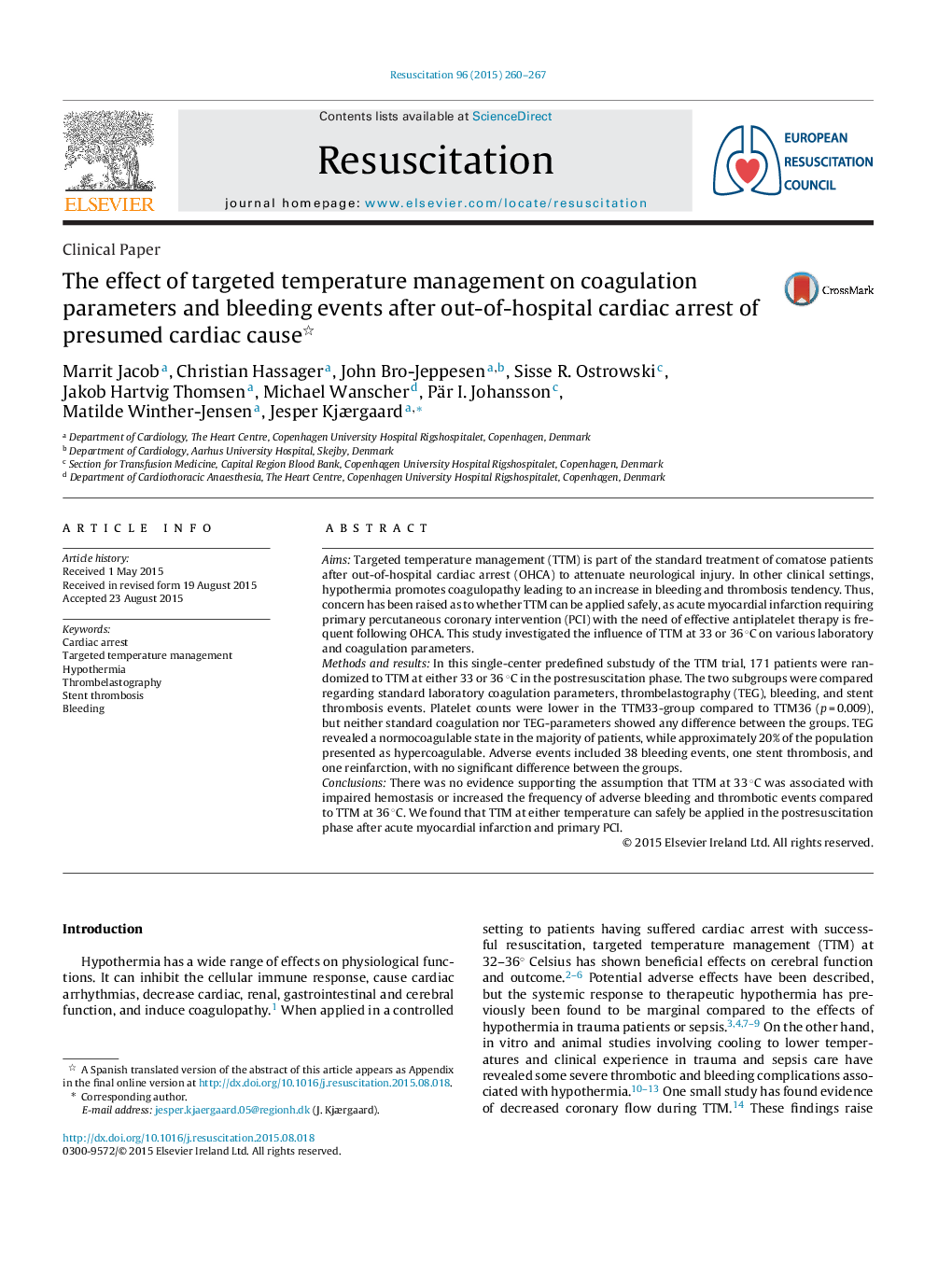| کد مقاله | کد نشریه | سال انتشار | مقاله انگلیسی | نسخه تمام متن |
|---|---|---|---|---|
| 5997524 | 1578988 | 2015 | 8 صفحه PDF | دانلود رایگان |
AimsTargeted temperature management (TTM) is part of the standard treatment of comatose patients after out-of-hospital cardiac arrest (OHCA) to attenuate neurological injury. In other clinical settings, hypothermia promotes coagulopathy leading to an increase in bleeding and thrombosis tendency. Thus, concern has been raised as to whether TTM can be applied safely, as acute myocardial infarction requiring primary percutaneous coronary intervention (PCI) with the need of effective antiplatelet therapy is frequent following OHCA. This study investigated the influence of TTM at 33 or 36 °C on various laboratory and coagulation parameters.Methods and resultsIn this single-center predefined substudy of the TTM trial, 171 patients were randomized to TTM at either 33 or 36 °C in the postresuscitation phase. The two subgroups were compared regarding standard laboratory coagulation parameters, thrombelastography (TEG), bleeding, and stent thrombosis events. Platelet counts were lower in the TTM33-group compared to TTM36 (p = 0.009), but neither standard coagulation nor TEG-parameters showed any difference between the groups. TEG revealed a normocoagulable state in the majority of patients, while approximately 20% of the population presented as hypercoagulable. Adverse events included 38 bleeding events, one stent thrombosis, and one reinfarction, with no significant difference between the groups.ConclusionsThere was no evidence supporting the assumption that TTM at 33 °C was associated with impaired hemostasis or increased the frequency of adverse bleeding and thrombotic events compared to TTM at 36 °C. We found that TTM at either temperature can safely be applied in the postresuscitation phase after acute myocardial infarction and primary PCI.
Journal: Resuscitation - Volume 96, November 2015, Pages 260-267
